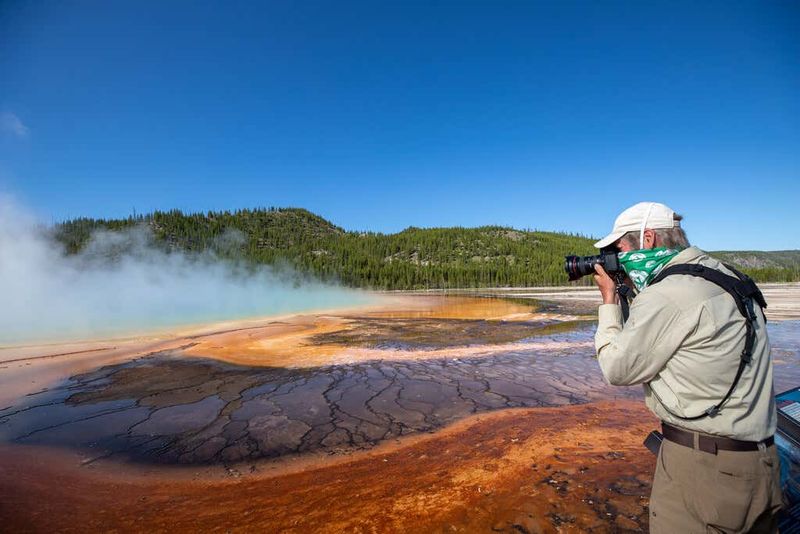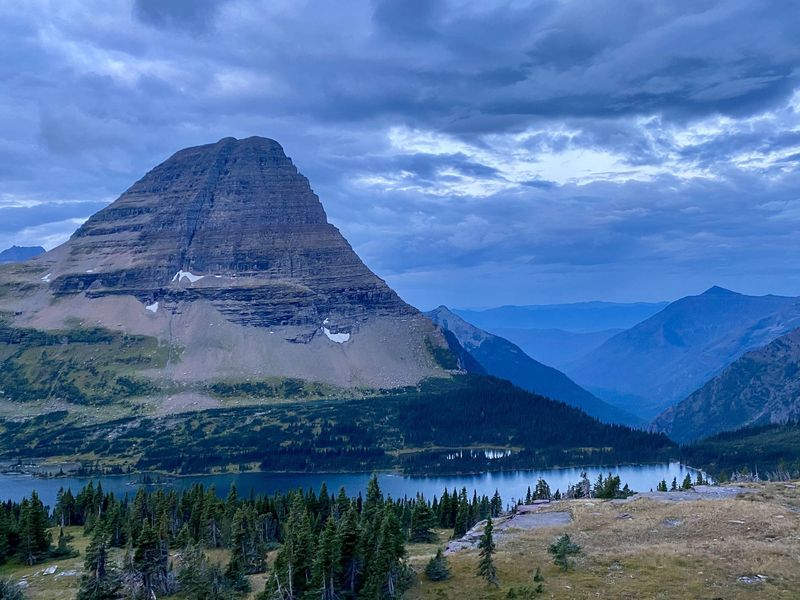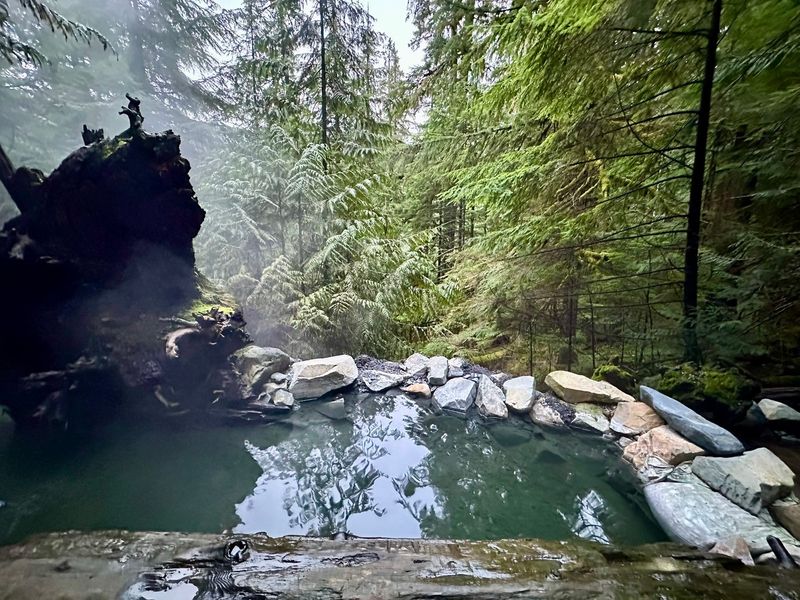National parks offer some of America’s best birdwatching opportunities, but most visitors stick to popular trails and miss the real treasures. Park rangers spend years exploring hidden corners where rare birds gather away from crowds. These secret spots require insider knowledge to find, but they reward patient birders with incredible sightings and peaceful experiences that few people ever discover.
1. Pond #5 – Everglades National Park, Florida

Tucked away from the bustling Shark Valley tram route, this unmarked freshwater pond feels like stepping into a wildlife documentary. Black-crowned Night-Herons stand motionless among the cattails, while Purple Gallinules dance across lily pads with their oversized yellow feet.
The real prize here is spotting the elusive Least Bittern, a master of camouflage that freezes with its bill pointed skyward when threatened. Rangers recommend arriving before sunrise when the wading birds are most active and hungry.
Pack plenty of water and bug spray for this adventure into Florida’s wild heart.
2. Willow Park – Yellowstone National Park, Wyoming

Most tourists rush past this quiet wetland near Mammoth Hot Springs, but rangers know it harbors some of Yellowstone’s most interesting waterfowl. Barrow’s Goldeneyes paddle through the calm waters, their white patches flashing like beacons against the dark surface.
American Dippers perform their underwater ballet along the stream edges, while Great Gray Owls occasionally hunt from nearby pines. Summer brings waves of colorful warblers that flit through the willow branches.
The thermal features create a unique microclimate that keeps this spot productive year-round, making every visit a potential surprise.
3. Doodletown – Appalachian Trail (Near Bear Mountain), New York

Walking through this abandoned settlement feels like discovering a lost world where nature has reclaimed civilization. Stone foundations peek through dense undergrowth while Cerulean Warblers sing from the canopy overhead, their sky-blue backs matching the filtered sunlight.
Hooded Warblers flash their bright yellow faces from the understory, and Scarlet Tanagers add splashes of red to the green tapestry. The mix of edge habitat and mature forest creates perfect conditions for these woodland gems.
Early June transforms this ghost town into a warbler wonderland that rivals any famous birding hotspot.
4. Hidden Lake Overlook (Behind the Boardwalk) – Glacier National Park, Montana

Beyond the crowded boardwalk lies a secret trail that few visitors ever discover. Clark’s Nutcrackers cache seeds in the rocky crevices while Gray-crowned Rosy-Finches forage near lingering snow patches, their pink wing bars glowing in the alpine light.
Rangers have even recorded extremely rare Harpy Eagle sightings here, though these magnificent raptors remain elusive. The high elevation and diverse microhabitats create opportunities for unexpected encounters.
Summer visitors should scan the snowfields carefully – rosy-finches often blend perfectly with the granite until they take flight in chattering flocks.
5. The “Secret” Marsh – Acadia National Park, Maine

No signs mark this hidden wetland near Sieur de Monts Spring, yet rangers consider it one of Acadia’s birding crown jewels. Nelson’s Sparrows skulk through the salt marsh grasses, their streaked plumage providing perfect camouflage against the golden stems.
Rusty Blackbirds pause here during migration, their haunting calls echoing across the water. Virginia Rails remain invisible but betray their presence with distinctive clicking vocalizations at dusk.
The best strategy involves patient listening rather than active searching – this marsh reveals its secrets to those who wait quietly.
6. Havasu Canyon – Grand Canyon National Park, Arizona

This remote riparian oasis requires serious commitment – permits, planning, and a challenging hike separate casual visitors from dedicated birders. Southwestern Willow Flycatchers nest in the dense willows, their presence indicating a healthy desert stream ecosystem.
Lucy’s Warblers build their unusual cavity nests in the mesquite, while Phainopeplas flash their silky black feathers from sycamore perches. The contrast between desert and water creates magical birding opportunities.
Spring migration brings the best variety, but summer residents make the difficult journey worthwhile for those seeking truly rare southwestern specialties.
7. Schooner Overlook – Great Smoky Mountains National Park, Tennessee/North Carolina

High above the tourist crowds, this mountain clearing offers both stunning views and exceptional birding opportunities. Ruffed Grouse drum their territorial messages from hidden logs, the sound carrying across the misty valleys like distant thunder.
Blackburnian Warblers flame orange against the dark spruce, while Peregrine Falcons patrol the ridges for unwary songbirds. The elevation creates a unique ecosystem that supports both northern and southern species.
May migration transforms this peaceful overlook into a songbird highway, with waves of colorful travelers pausing to refuel before continuing their journey north.
8. Boulder Creek Trail – Olympic National Park, Washington

Ancient trees tower overhead while Marbled Murrelets nest impossibly high in the mossy branches – one of nature’s most surprising adaptations. These seabirds fly inland to raise their young in the safety of old-growth giants.
Varied Thrushes add their haunting single-note calls to the forest symphony, while Pacific Wrens explode into complex songs from the understory shadows. The temperate rainforest creates an acoustic cathedral where every sound carries special meaning.
Dawn choruses here feel otherworldly, with layers of bird songs blending with dripping moss and distant ocean waves.
9. Swan Lake – Denali National Park, Alaska

Despite its grand name, this small lake near the park entrance holds outsized birding rewards for those willing to look carefully. Trumpeter Swans grace the water with their elegant presence, their calls echoing off the surrounding mountains.
Arctic Warblers bring Old World charm to the New World wilderness, while Northern Hawk Owls perch boldly on spruce tops like feathered sentinels. The subarctic environment supports species found nowhere else in North America.
Rangers suggest scanning every spruce carefully – owls often sit motionless for hours, perfectly camouflaged until they suddenly swivel their heads to track movement.
10. The “Ghost Forest” – Congaree National Park, South Carolina

Flooded cypress trees create a haunting landscape where Prothonotary Warblers nest in natural cavities, their golden heads glowing like lanterns against the dark water. This swampy cathedral pulses with life despite its ethereal appearance.
Swallow-tailed Kites soar overhead with impossible grace, while Pileated Woodpeckers hammer out rectangular holes in dead snags. The flooding creates perfect habitat for species that thrive in wet forests.
Kayaking provides the best access to this watery wilderness, allowing close approaches to birds that rarely see humans in their flooded domain.
11. Upper Pines (Near Mirror Lake) – Yosemite National Park, California

Away from Yosemite’s crowded valley floor, this quieter spot rewards patient birders with Sierra Nevada specialties. Mountain Quail scurry along meadow edges, their distinctive head plumes bobbing with each quick step.
Williamson’s Sapsuckers drill neat rows of holes in pine bark, while Hermit Warblers sing from the canopy heights. The mix of pine forest and open meadows creates diverse microhabitats within a small area.
Early morning visits offer the best chances for quail sightings, as these secretive birds venture into openings to forage before retreating to dense cover for the day.
12. Salt Creek Road – Death Valley National Park, California

In America’s hottest, driest national park, this desert oasis seems impossible yet thrives with specialized bird life. Verdins build their thorny fortress nests in mesquite bushes, their yellow heads bright against the harsh landscape.
LeConte’s Thrashers run roadrunner-style between bushes, while Crissal Thrashers skulk in dense cover, their rusty undertail coverts flashing briefly before disappearing. These desert masters have evolved remarkable adaptations for extreme conditions.
Early morning visits are essential before the desert heat becomes unbearable – both birds and birders retreat to shade once the sun climbs high.



